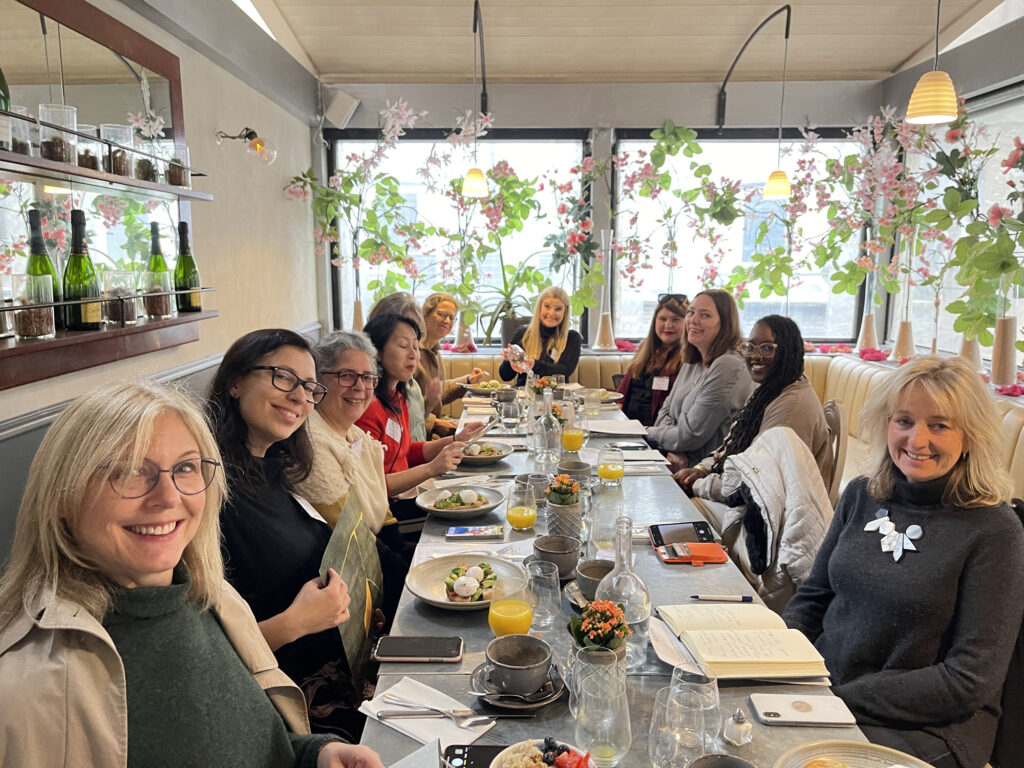How do I stand out from the crowd?
In Part 2 of our 3-part blog series ‘How to be a Freelance Interior Designer’, we consider the form your freelance Interior Design business should take, how to price your services and how to get yourself known in the Interior Design world.
Get your ducks in a row…
Initially, there is common advice to register as a sole trader – however, I actually disagree with this.
I would strongly recommend that you register as a limited company right from the beginning. Reason being… liability.
If you design something as a freelance designer, be it a bespoke sofa or a built-in desk for another Interior Designer, whose ultimate client is the homeowner and something goes wrong at any point of the installation if the client decides to sue the Interior Designer, who then, in turn, sues you the freelancer…. if you are a sole trader, all your personal assets are up for grabs. However, if the freelancer is working under the protection of a limited company, then only the business assets (i.e. the computer etc) are at risk.
Simples no..?
Next, you will need to organise freelance insurance to cover you on site (so you can offer surveys as a service) as well as professional indemnity insurance.
Hiscox Insurance actually have a fantastic blog post which I think is really worth a read: What insurance do I need as a freelancer?
Think about the software and the licences you need (AutoCAD, Vectorworks, Sketchup, Photoshop, Indesign, Xero) and hardware – and… you will need a powerful computer, a good graphics card and a large screen with great resolution.
And that’s just the front end – then you need the back-end stuff – a cloud-based back-up system, a cloud-based server, IT support. It’s a big tech world out there so talk to other freelancers, share your info and get recommendations.
The price is right…
Always a tricky question, and what so many Interior Designer Freelancers don’t realise is that you really have to first work out your monthly outgoings: both work expenditure (such as insurances, all the IT stuff, membership fees, office supplies etc) as well as your own personal costs (including utility bills, rent/mortgage, pension, petrol, holidays, groceries).
The whole purpose is to work out your hourly rate that will meet these costs and surpass them so you can generate a profit as a Freelance Interior Designer. A rule of thumb is there are approx. 2000 billable hours on average each year. Using your monthly costs, work out your break-even hourly rate and then work in a realistic profit margin.
Getting yourself known…
You don’t have to do anything radical like take an ad out on the side of a bus or have your name up in lights in Piccadilly Circus, but you do need to let the members of our amazing Interior Design community know you are out there and available for work. This involves being brave, being confident and believing in yourself and your abilities.

- Networking is a great first step. Groups and communities like Metier Rendezvous offer opportunities to meet and engage with other Interior Designers, allowing them to get to know you. Sell yourself as a freelancer – describe how you work, the software you can use, and emphasise your flexibility (designers love flexibility) – you are happy to work remotely, happy to work on an ad hoc basis (they can book your time as and when they may need it provided you are available). Perhaps you might 2 days a week for 1 Interior Designer, 2 days for another designer and then 1 day on your own projects. Terms like this are very common, and following lockdown, currently really attractive, as the design business doesn’t have to commit to anything long-term or regular, at a time when cashflow is a bit uncertain.
- Reach out to smaller businesses and sole practitioners – often they could do with an extra pair of hands – and they are so much easier to talk to (fewer tricky gatekeepers to negotiate!).
- Visit the BIID website and plug in your postcode and discover all the Interior Designers who are most local to you.
- Don’t be afraid to cold-call – two of the most successful interns I ever had the pleasure of working with, were people who cold-called me! (They each ended up working with me for +/- 4 years!) Do your homework and research the Interior Design company before you speak to them, check out their website, follow them on Instagram or LinkedIn. Then go for it!
Introduce yourself, emphasise you are local and keen to gain experience, and ask whether they are looking for freelance Interior Designers to help out with drawings or surveys or sourcing, sample filing or even admin filing – anything to get your foot in that door. Being able to describe what you are able to do and how you are able to help goes a long way.
Refer to something you have seen on their website, a project you liked or noticed, how that fits with what you are interested in – turn on that charm and make yourself as appealing as possible. Then invite them for a coffee and an opportunity to see your portfolio.
In our final blog on ‘How to be a Freelance Interior Designer’ we look at portfolios and will be giving you top tips on how to organise and present your portfolio to make it stand out from the crowd.
If you haven’t had the chance to read Part 1 of our blog series, please do flip back there now … and be sure to read our advice on how to get started and how to brand yourself.
Metier Rendezvous is a peer support network for Interior Designers in the UK and around the world!
We provide day-to-day pro-active and friendly support for all our members.
Collaboratively, which many find hard to believe, we believe in Community over Competition.
We share business ideas, tips, brainstorm on projects together as well as forward on leads.
Why not find out why Interior Designers love being a Metier Member!

